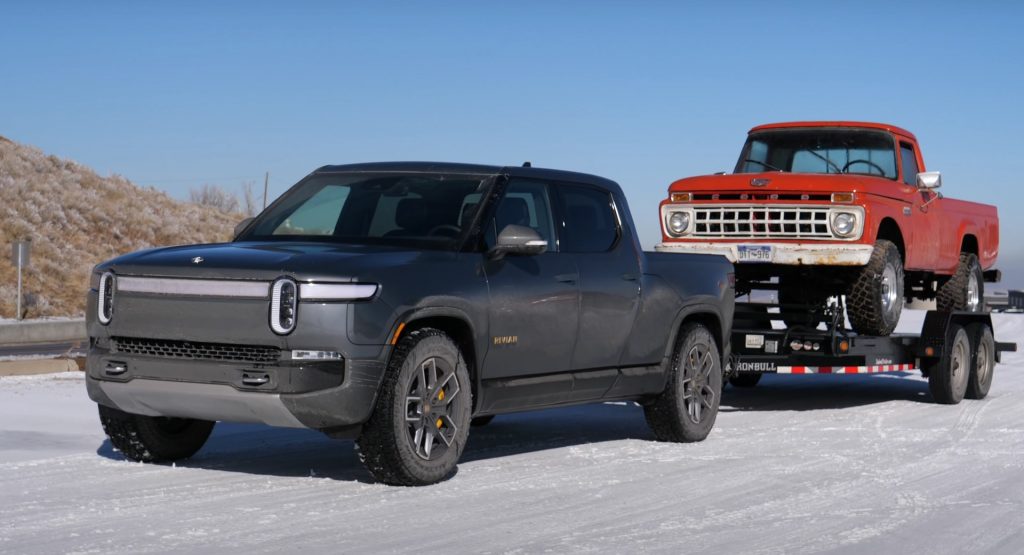The Rivian R1T is a remarkable truck. It’s the very first all-electric pickup to ever make it to production and it’s the fastest accelerating production truck too. While range anxiety has been reduced with more charging stations and bigger batteries, towing is still a major concern for electric vehicles. Now we know exactly how well the world’s first all-electric pickup truck handles a serious torture test high up in the Rocky Mountains.
TFLTruck took their Rivian R1T up to what they call the IKE gauntlet named for an eight-mile section of road on I-70 in Colorado that incorporates the Eisenhower / Johnson tunnel with a peak elevation of more than 11,000 feet (3,352 m).
During those eight miles, the average grade is 8% which is a strain both up and down the mountain. In this test, the R1T towed a classic Ford pickup which, when combined with the trailer it’s on, weighs just over 8,000 pounds (3,628 kg) in total. It also did it in sub-50-degrees temperatures which aren’t great for any EV.
Read Also: Airstream’s Self-Propelled Trailer Concept Will Help Soothe Your Rivian Range Anxiety
While the Rivian has a maximum towing capacity of 11,000-pounds (4,989 kg), the folks at TFLTruck use the same load for all vehicles in the class to keep the results comparable. So how did the all-electric pickup handle the load? Well, it’s the only truck to ever need a pitstop halfway through the test for one. After leaving Boulder, Colorado, with a 99 percent charge, and driving some 70 miles (112 km) to the gauntlet, they’re down to just 15 percent of battery.
After descending the IKE, they find a charging station to ensure they’ll have enough range to get home. For one reason or another, that experience isn’t great. The ElectrifyAmerica charger doesn’t provide the fast speeds it seems to be capable of and drops as low as 44kW at times. Once the guys reach 51 percent battery capacity they call it good and head back up the mountain and towards home.
With that charge, they make it all the way back without issue or the need to stop and charge again. So getting to the testing grounds took around 81 percent and returning all the way back took only 21 percent. Clearly, going downhill saved a lot of energy.
In addition, they report that the R1T provided the smoothest trailering experience they’ve ever had and even went on to say that at times, they forgot they had a trailer on the back of the truck. It’s still not the super-long hauler that some other ICE trucks are but it’s certainly a step in the right direction.





